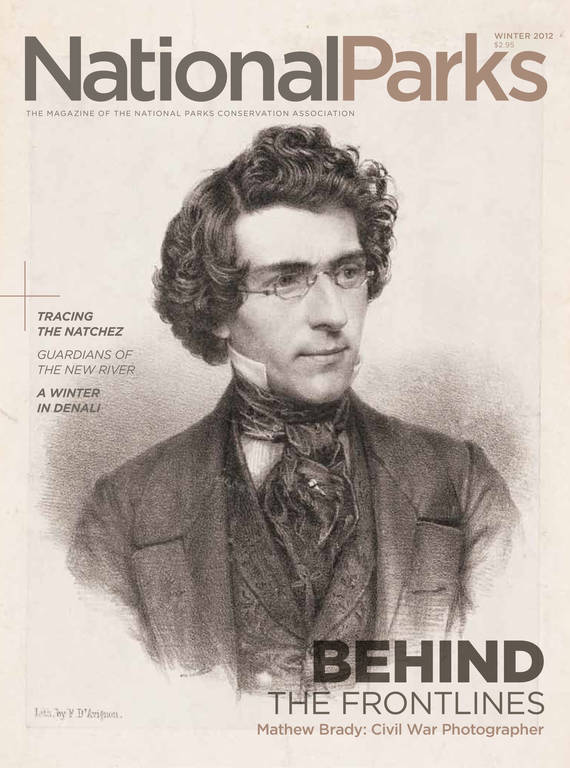Winter 2012
Let’s Take This Outside
Students and scientists team up to document every living thing in Saguaro National Park.
Kim Whitley and a classroom of teenagers are looking for creepy crawly things at Signal Hill, in Saguaro National Park, 20 minutes west of Tucson. It’s 8 o’clock on a cool October night, and the entomologist from Northern Arizona University has just spotted a group of red harvester ants under her headlamp. Whitley takes the opportunity to tell us how each member of the colony has a specific role, and shows us how to hold a harvester ant in such a way that it can’t possibly bite or sting. She then announces that harvester ants are part of the genus pogonomyrmex—her very favorite genus—and she insists we all yell the word out loud. And we do. Kim Whitley loves bugs, and her excitement is infectious.
And that, in a nutshell, is the idea behind this and every BioBlitz: Gather hundreds of scientists, thousands of students, and anyone else who wants to pitch in, and spend 24 hours documenting as much as you can about every species within the park. Graduate students join professors from Arizona universities on overnight camping expeditions to collect data on birds. Elementary school kids head out with Audubon Society volunteers who show them how many ways a wild animal can leave a trace, and to explain that scientists strongly prefer the word “scat” to “poop.”
In the process, lots of people get hooked on the park experience. Saguaro National Park hosted the fifth BioBlitz in the series, with the support of National Geographic, the Arizona-Sonora Desert Museum, and Friends of Saguaro. The first BioBlitz took place in Washington D.C.’s Rock Creek Park in 2007 and the next one will unfold in Colorado’s Rocky Mountains in 2012.
Home base for many of the activities was a tent city set up in the parking lot of the main visitor center. Here’s a scientist wearing a bolo tie featuring a ladybug the size of a tennis ball. There a group of kids dances to a park ranger’s song about sea turtles, which is surprisingly catchy. Every hour or two, a mini-expedition is launched from base camp, and when kids yell, “I found something!” a scientist actually comes running with a net in hand and a serious look on his face.

National Parks
You can read this and other stories about history, nature, culture, art, conservation, travel, science and more in National Parks magazine. Your tax-deductible membership donation of $25 or more entitles…
See more ›“I met with a group of high schoolers camping overnight at one of our field sites, where they’d been conducting bird inventories and aquatic invertebrate inventories, and the kids were such inspirations,” says Darla Sidles, park superintendent. “It was great to think how many of those kids might look back on this event and say, ‘That’s what made me want to become a scientist.’”
Indeed, in spite of all the fun, this wasn’t just a glorified field trip. Real science was done here. At the closing ceremony, organizers reported documenting 859 species, a number that’s expected to grow as biologists identify insects and microscopic organisms that weren’t immediately recognized.
“When someone handed me a piece of paper that said we’d found 400 species new to the park, I went straight to the science coordinator so I could find out what had gone wrong with the data collection,” says Andy Fisher, the park’s chief of interpretation. “Five people had to stand there and tell me that no, really, we found 205 species of endophyte fungus that we didn’t even know we had. Another group found, at last count, 75 native species of nonvascular plants—a huge taxa, representing knowledge that we just didn’t have—but now we do.”



